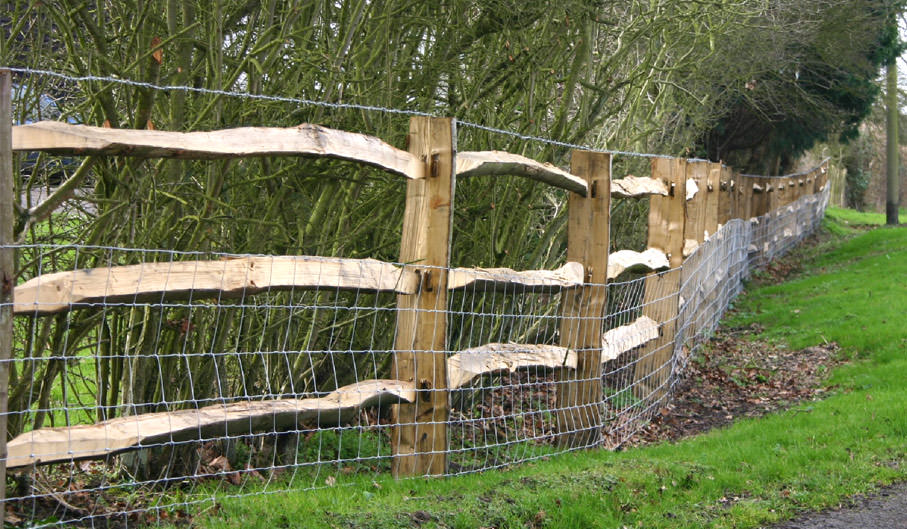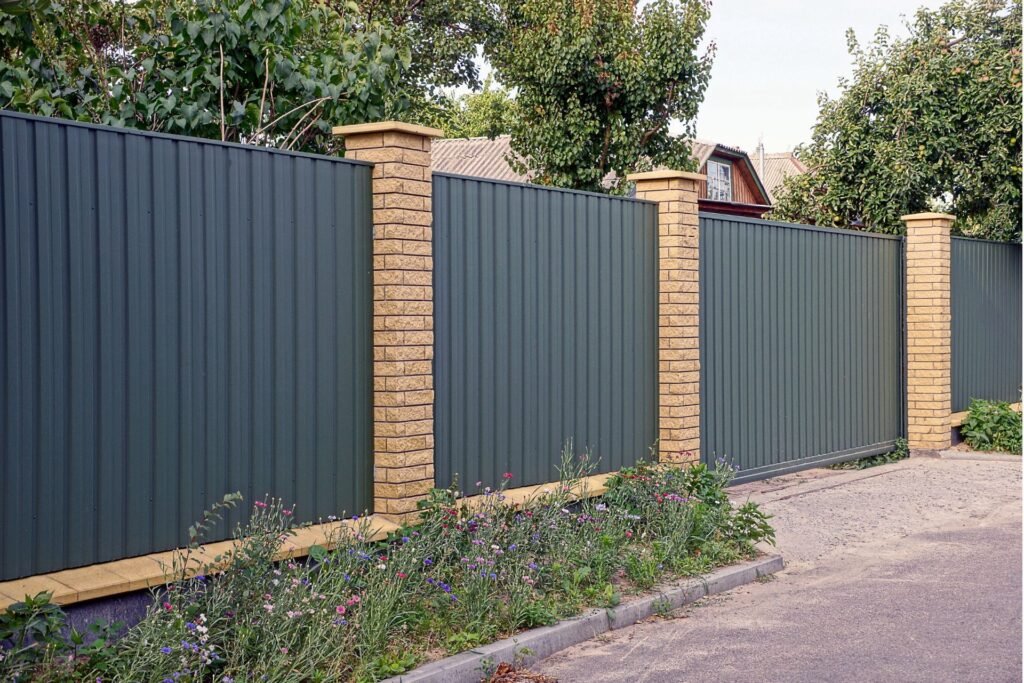Fencing in Auckland FAQs: Your Most Common Questions Answered
Fencing in Auckland FAQs: Your Most Common Questions Answered
Blog Article
A Comprehensive Overview to Fence Install: What You Need to Understand About Fencing Provider
When it comes to setting up a fencing, you've got a lot to contemplate. You'll need to examine your residential or commercial property and decide if you desire to tackle the installation yourself or employ an expert.
Comprehending Different Kinds of Secure Fencing Materials
When you're selecting a fencing, recognizing the different kinds of fencing materials is important. Each product offers special advantages and disadvantages, influencing your decision. Wood supplies a classic appearance and can be personalized, yet it requires routine upkeep and might rot in time. Plastic is low-maintenance and sturdy, withstanding fading and bugs, yet it can be pricier upfront. Chain-link fence is cost-effective and functional for confining large locations, though it lacks personal privacy and visual charm. Metal fencing, like wrought iron or light weight aluminum, supplies toughness and beauty but may require corrosion protection. Composite materials blend the best of timber and plastic, offering toughness with an all-natural appearance. Consider your spending plan, wanted aesthetic appeals, and upkeep choices when examining these alternatives. Inevitably, picking the ideal product will help you develop a fence that satisfies your needs and improves your residential or commercial property's value.
Analyzing Your Building and Fence Needs
Prior to you start your fencing setup, it's vital to assess your building limits and the purpose of your secure fencing. Comprehending local laws and licenses will certainly likewise aid you prevent any kind of legal problems down the line. By taking into consideration these elements, you'll assure your fence satisfies both your needs and neighborhood criteria.
Home Borders and Lines
Comprehending your property limits is essential for a successful fencing installation, as it not just aids you determine where your fencing will certainly go but likewise ensures you're respecting your neighbors' area. Beginning by evaluating your property deed or survey, which typically describes the specific borders. You could likewise wish to talk to an expert surveyor if you're uncertain.
When you've developed your borders, note them clearly with stakes or flags. This visual help will assist you throughout the installment and protect against any disagreements with neighbors. Keep in mind, local zoning laws may dictate fence placement and height, so examine those regulations too. Taking these steps guarantees your fence is correctly positioned and compliant, making the entire procedure smoother for you.
Function of Fencing
Fencing serves several functions that can considerably boost your property. It provides safety and security by creating an obstacle that prevents trespassers and shields your items. Second, it supplies privacy, allowing you to appreciate your outdoor area without bothering with spying eyes. Third, fence can specify your building borders, making it clear where your area ends and your neighbor's begins. Furthermore, it can enhance the aesthetic allure of your home, adding personality and design while raising aesthetic allure. Finally, a well-placed fence can help manage noise from neighboring roadways or next-door neighbors and also maintain family pets and children secure. By examining your particular demands, you can choose the appropriate kind of secure fencing to attain these benefits successfully.

Local Laws and Permits
Just how can you assure your fence installment complies with regional policies? Some locations require authorizations for any brand-new fencing, while others may just need them for taller structures.
In addition, think about building lines and any type of easements on your land. Noting your boundaries can stop disputes with neighbors or possible legal problems. By understanding these guidelines ahead of time, you can avoid pricey mistakes and identify your fence is developed to last, boosting both your property's worth and your comfort.
Local Laws and Permits for Fencing
Prior to you begin your fencing task, it is necessary to inspect regional laws and get any required licenses. Each city or county has its own regulations concerning fence height, materials, and positioning. These regulations guarantee that your fencing adheres to security requirements and community aesthetics.
Start by visiting your local zoning office or their website to find particular demands. Fence Company. You might need to submit a fence plan, outlining measurements and products. Some locations may also need a survey to verify building limits. Do not forget to consider any property owners' organization (HOA) guidelines, as they can impose additional constraints.
Overlooking to follow these laws can bring about penalties or forced elimination of your fencing, losing both money and time. So, put in the time to research study and secure the proper authorizations for a smooth installation process. This action is important in making certain your task lines up with neighborhood legislations and community criteria.
Picking Between Do It Yourself Setup and Professional Services
Are you thinking about whether to deal with the fence installment on your own or employ an expert? If you're helpful and have experience with comparable tasks, Do it yourself could save you cash.
Next, think about the time dedication. Setting up a fencing takes some time, and if you're juggling an active schedule, working with a specialist can ensure it gets done efficiently. Additionally, consider the intricacy of the project. If your backyard has tough surface or specific design needs, professionals bring know-how that can make a difference.
Lastly, consider neighborhood regulations. An expert knows the licenses and codes required, aiding you stay clear of potential penalties. Eventually, evaluate your skills, time, complexity, and laws to make the very best option for your fencing job.
Step-by-Step Overview to Fencing Setup
When you have actually determined to move ahead with your fencing setup, complying with a structured step-by-step method will ensure a smooth process. Beginning by marking the fence line with risks and string website link to visualize the format. Next off, inspect regional guidelines to confirm conformity with height and property lines.
Dig message holes at least two feet deep, spaced according to your fencing kind-- usually 6 to 8 feet apart. Insert the posts right into the openings and fill them with concrete for stability. Once the messages are set, affix the horizontal rails or panels, making certain they're degree.
Check for any kind of loose connections and make essential modifications. Your fencing should currently be prepared to boost your property and give the privacy or security you require!
Maintenance Tips for Long Life of Your Fencing
To maintain your fence looking wonderful and enduring much longer, regular upkeep is vital. You need to set up a cleansing timetable, examine for any damage, and apply protective coverings as required. By staying proactive with these tasks, you'll ensure your fence continues to be tough and appealing for several years to find.
Normal Cleaning Arrange
Begin by washing your fencing with water at the very least as soon as every season to eliminate dust and particles. Don't neglect to inspect for any corrosion on metal fencings; a cable brush can assist remove it, complied with by a coat of rust-resistant paint. Keeping your fence tidy not just boosts its look however likewise prolongs its life, saving you money in the long run.
Examine for Damage
Frequently inspecting your fencing for damages is vital if you want to maintain its integrity and durability. Begin by walking around your fence to look for visible indications of wear, such as fractures, loose boards, or rust. Inspect for any kind of indications of bugs, like termites or woodpeckers, that might jeopardize your fence's structure.
Apply Protective Coatings
After inspecting your fencing for damage, applying safety coverings is a crucial action in ensuring its longevity - Fencing in Auckland. If your fence is plastic or steel, take into consideration a UV-protective spray or paint to prevent fading and rust.
See to it to clean up the surface extensively prior to application, as dust and crud can threaten the layer's performance. Apply the layer in completely dry weather for far better adhesion, and do not fail to remember to adhere to the maker's instructions for the very best results. Frequently reapply every couple of years to keep your fencing looking excellent and standing strong versus the aspects.
Cost Factors To Consider and Budgeting for Your Fence Job
When planning your fencing project, recognizing cost considerations is necessary to staying within budget plan. Begin by figuring out the type of material you want, as costs can differ substantially in between timber, plastic, blog here and metal. Don't neglect to element in labor prices-- hiring experts could save you time however can raise your overall expenditures.
Following, gauge your residential or commercial property to determine the straight video footage required, as this directly impacts product costs. In addition, take into consideration any authorizations you may require, which can include to your budget plan.

Lastly, it's a good idea to establish apart a contingency fund for unanticipated expenses. By preparing thoroughly and taking into consideration these elements, you can develop a reasonable spending plan that meets your fence requires without breaking the bank.
Regularly Asked Questions
How much time Does the Typical Fencing Installation Take?
The average fencing installment usually takes one to three days, depending upon the fencing type and size of your backyard. You'll need to consider any type of hold-ups due to weather or allow requirements also.
What Should I Do if My Fencing Is Harmed?
If your fencing is sites harmed, first examine the level of the damages. Repair minor issues yourself, but also for significant troubles, consider getting in touch with an expert. Do not wait also long; it'll aid protect against further problems.
Can I Set Up a Fencing on a Slope?
Yes, you can install a fence on a slope. You'll need to adjust your installation method, either by stepping the panels down or using a racked design to guarantee stability and proper positioning with the surface.
What Are the Ideal Practices for Fence Painting?
To paint your fence effectively, start with correct cleansing and sanding. Usage top notch paint and apply in even strokes. Don't fail to remember to pick the appropriate climate for paint, ensuring it's completely dry and moderate.
How Commonly Should I Examine My Fence?
You should check your fencing a minimum of two times a year, concentrating on signs of damages, rot, or corrosion. Routine checks assist you capture issues early, guaranteeing your fencing remains sturdy and aesthetically attractive longer.
Report this page